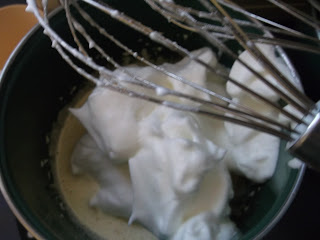Men give women mimosa flowers or mimosa cakes in Italy, especially in Emilia-Romagna, on March 8th, for Women's Day.
History
International Women's Day was first celebrated in the United States in 1909. In Italy, it was first conmemorated in 1946. The mimosa flower blooms in March and was thus added as a colorful, vital, and feminine symbol for the occasion in this country.
Mimosa Cake
This delicate cake is made to resemble the flower. Its main elements consist of: a) a light sponge cake, so it can be imbued with a rum syrup. b) enough sponge cake leftover so it can be cut into enough cubes to properly cover the cake. c) a very yellow sponge cake so that it resembles the color of the flower d) a dome-shaped cake should result in the end, whether you place the cake in a bowl so that it takes its shape, or you heap enough cream on top, or even taper the cake tower enough with the knife to give it a dome shape. e) pastry cream mixed with whipped cream results in a delicious filling that is also used to cover the cake.
Recipe
from http://www.gamberorosso.it/index.php?option=com_k2&view=item&id=233677:torta-mimosa&Itemid=17&tmpl=component&print=1
Sponge Cake
75 grams of white sugar
75 grams of flour
3 egg yolks
3 egg whites
Beat egg yolks and sugar until they are thick and lighter in color.
Beat egg whites until stiff; then fold them into the batter. Finally, fold in the flour.
Pour the batter into four greased and floured 4 inch springform pans. Bake at 325 degrees for 25 minutes.
Syrup Recipe
1/2 cup of water
1 1/2 ounces of sugar
4 tablespoons of rum
Heat water and sugar until the sugar has dissolved. Turn off the heat and add rum.
When the cakes are ready, poke holes in three layers and pour the syrup over them.
Next, take the extra layer, remove the crusts and cut it into small cubes.
Pastry Cream
1 egg yolk
30 grams of sugar
30 grams of flour
Zest of half a lemon
pinch of salt
Place milk, salt, sugar, flour, and lemon zest in saucepan. Heat until boiling, then pour a small amount on the egg yolk and mix. Pour the egg yolk mix into the saucepan. Stir until thick and remove from heat.
Whipped Cream
62 grams of whipping cream
25 grams of confectioner's sugar
Whip until the cream is stiff.
Assembling the cake
Fold the whipping cream into the pastry cream. Place this cream on one of the layers of sponge cake, then another layer of cake on top. Add more cream, then the third piece of cake. Cover the entire dome with cream.
Place the cubes on top of the cream-covered cake, so that it will resemble the mimosa flower.
References
http://cookitalia.blogspot.com/2011/03/mimosa-cake.html
http://www.academiabarilla.com/italian-recipes/step-step-recipes/mimosa-cake.aspx

































